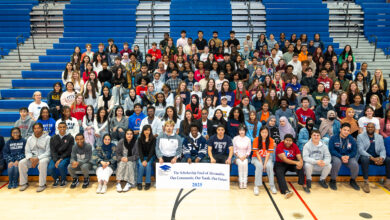Polk Partners with TREX for the Plastic Bag Challenge
The ECO Club is partnering with the TREX company, maker of decking materials made from reclaimed sawdust and plastic film/bags to be a collecting center for film plastics that cannot be recycled in our current single-stream recycling program at school. The items we will be collecting include grocery bags, bread bags, case overwrap, dry cleaning bags, newspaper sleeves, ice bags, wood pellet bags, Ziplock and other re-sealable bags, produce bags, bubble wrap, salt bags, and cereal bags. All materials must be clean, dry, and free of food residue.
As a collection center for TREX, James K. Polk is competing with schools across the country in the Plastic Film Recycling Challenge. The goal is to be the school that collects the most plastic by weight (see description of contest below).
We will have three recycling bins placed around the school: one in the front lobby area, one outside of the multipurpose room next to the ECO Club display case, and one down in the kindergarten wing. Each bin will have a color poster and some hanging examples to show what items can be brought in.
Also, all students in the school have received a magnet to take home. These magnets remind students and their families about which items they can bring in with helpful pictures.
Thanks in advance for getting your students excited and involved in such a great initiative. This is a great way for the Polk community to come together to make a difference for our planet!
THE PLASTIC FILM RECYCLING CHALLENGE
Every year hundreds of schools across the nation compete against each other to recycle the most plastic film. In addition to providing a better understanding and appreciation for the importance of recycling, Trex will happily donate a high-performance composite bench to the winning school, and bestow honorary awards to every school that participates.
The challenge begins each year on America Recycles Day, November 15, and lasts until April 15. Winners are announced on Earth Day.




